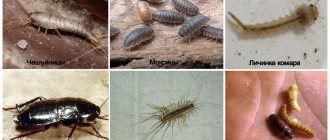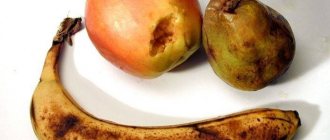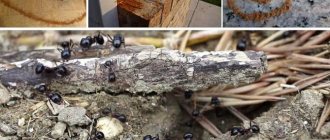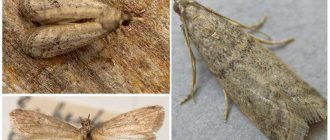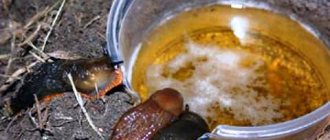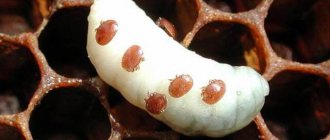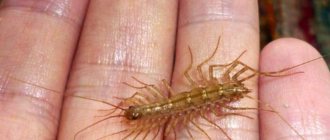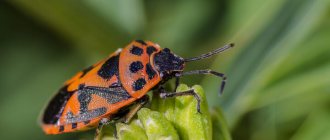What bugs are found in cereals and flour?
If bugs appear in cereals, how to get rid of them is an important issue for preserving other products.
To fight, you should identify beetles in time and know their types:
| Name | Habitat Features | Where are they found? |
| Bread grinder | Able to fly, not afraid of light, found between window frames. Penetrates with animal feed | • Bakery products. • Medicinal herbs. • Tea. • Coffee. • Cocoa. • Cereal mixtures. • Book bindings |
| Flour beetle, beetle | The pest is highly prolific. The eggs are microscopic in size and easily pass through the sieve opening. | • Flour.• Starch.• Rolled oats.• Semolina.• Bran.• Dried fruits.• Rice.• Buckwheat |
| Red mukoed | Comes with low quality animal feed | • Cereals.• Grains.• Expired flour |
| food moth | The reason why the insect appears is improper food storage, ventilation, or an open window. Active mainly at night | • Buckwheat.• Hercules.• Semolina.• Pasta.• Rice.• Flour.• Tea.• Dried fruits |
| Rice weevil | It is highly fertile, reproduces quickly, and flies well. It has a powerful mouthparts, thanks to which it is able to gnaw through grain. The optimal temperature for reproduction is between 26-30 degrees | • Rice.• Buckwheat.• Wheat.• Barley |
| Bean grain | Completely eats up beans and cereals | • Beans.• Beans.• Peas.• Lentils.• Soybeans.• Chickpeas |
Where do bugs in cereals and larvae come from?
In most cases, the insect or its larva gets in with poor quality cereals purchased by weight. However, it is not uncommon for beetle eggs to be found in vacuum packaging, if we are talking about unscrupulous manufacturers who violate the sanitary regime for storing cereals in factories and warehouses.
Infection can occur in recently purchased cereals due to improper proximity, when prunes, pasta, flour, tea, coffee, and spices are stored nearby.
The best ways to deal with kitchen bugs in bulk products
The most effective of all known methods is the use of an aerosol product called Dichlorvos. After using this product, not a single bug will remain alive.
The method is not the safest to use, but it will definitely help completely solve the problem. The product disappears from the room within several days. You cannot be indoors at this time. It is necessary to think about the place of residence for this period of time even before the start of cleaning.
How to remove beetles:
- Carry out a thorough inspection of those things where insects may be located, and remove these items from the room.
- Throw out the entire stock of cereals, wash the jar in which they were located, and all the dishes in the kitchen.
- Wipe the baseboard, floor, every cabinet.
- Wear protective equipment and treat the room with Dichlorvos. It is important to treat every hard-to-reach crack, since these are the places where insects can be found.
- After ventilation, all surfaces must be thoroughly washed.
An economical method (how to sift so as not to throw away)
The flour must be sifted using a fine sieve. This will make it possible to get rid of larvae and eggs.
When the product is sifted, it is calcined in the oven for 30 minutes. For flour, 50 degrees is enough.
After these steps, the flour will become suitable for consumption.
Bugs in flour: how to get rid of them using heat treatment
Bugs in flour
There are several methods to solve the problem:
- Using the oven. The procedure takes 30 minutes. Semolina and flour should not be exposed to temperatures above 50 degrees. For other types of cereals, this figure can reach from 110 to 200 degrees.
- Exposure to ultraviolet radiation. The products are evenly laid out on a clean, flat surface and left for 2-3 hours. The beetles will leave the food if they cannot withstand exposure to ultraviolet rays.
- Exposure to low temperatures. The cereal is placed in the freezer for a day. A balcony is suitable for these purposes. You can take food outside if it is a private house when the air temperature is at least 15 degrees below zero.
Pests often hide in furniture and other rooms. Therefore, the entire apartment, especially the kitchen, must be treated with additional methods.
Small bugs in the kitchen: how to get rid of borax
Boric acid has a poisonous effect. Individuals absorb the poison and bring it with them to the nest, as a result of which the entire colony of pests dies.
To make bait, borax is mixed with sugar and flour. Semolina, egg, honey can be added, after which the bait is laid out on sheets of paper and placed in the place of the greatest concentration of beetles.
How to get rid of bugs in cereals using water
If you need to prepare a dish urgently and the grains are spoiled, use salted water. The cereal soaked in it will remain at the bottom, and light bugs will float to the surface. After this, it is recommended to heat the product in the oven and sift.
Attention! The method is not suitable for removing insects in flour.
Water will help not only when manipulating directly with products, but also during the cleaning process. To do this, all furniture must be washed with water and vinegar. Per liter of liquid you will need 1 tablespoon of the product.
The best option is to treat shelves and corners with boiling water. But not every surface can withstand high temperatures.
How to get rid of cereal bugs in the kitchen: additional methods
In addition to traditional methods, there are folk methods for solving the problem:
- Fragrant herbs. Bugs cannot tolerate plants with a strong odor. To do this, small bags containing wormwood, chamomile, and lavender are placed in the cabinet, especially in the corners. You can also use garlic, cloves, and nutmeg.
- Sunflower oil. After heat treatment, you can pour a little sunflower oil into small caps. This will help trap insects. Then you just need to pour out the oil.
- Pheromone lures. These control agents can be purchased in specialized stores. The bait attracts the surviving individuals.
Where is the best place to store cereals:
- Glassware. The optimal container is a glass container with tight lids. It is advisable to place the containers on the top shelves of cabinets, where there is sufficient light.
- Fridge. Due to the low temperature conditions, adults will not be able to reproduce.
Rice gnat
Rice gnats actively feed on leaves, leading to plant death.
These pests appear in rice fields in the second half of April. With the germination of the first shoots, mosquitoes lay eggs on young leaves. The fertility of females is up to 100 eggs per season. In a clutch, eggs are placed in small piles. The hatched larvae penetrate into the pulp of the leaf and make passages in it. Pupation occurs in the thickness of the leaf. The pest is characterized by rapid development. The egg matures in two to three days, the larva and pupa develop within a week, and young adults lay eggs already on the sixth day after emerging from the pupae. Three generations of insects develop per year.
Leaves affected by rice gnats turn yellow and die, and young shoots die.
Preventive measures include clearing fields of weeds and temporarily draining crops.
To kill mosquitoes, a Bazagran solution (50%) is used. It is an insecticide with low toxicity to humans and has a pronounced systemic effect against insects.
Is it possible to eat grains and flour infested with beetles?
Food should not be consumed together with insects. Before using cereals, you need to get rid of pests.
However, even careful processing will not be able to remove larvae, scales, and waste products of beetles. They pose no danger to a healthy adult.
Before using cereals you need to get rid of pests
It’s a different matter when it comes to children and people with weakened immune systems. In these cases, the use of such products can cause a severe allergic reaction or cause intoxication of the human body, which will lead to disruption of the functioning of the gastrointestinal tract and an increase in body temperature.
How to get rid of a mole cricket
This is the most famous garden pest, which is large in size and lives mainly underground.
It prefers moist, loose soil, so you can find it in a cabbage bed, in a compost heap or manure. The mole cricket damages plants, leaving behind dug up soil. It is through such winding passages that one can detect its appearance on the site. Basically, the insect ends up in the garden with manure, which is brought to fertilize the soil. Since this pest can fly, over time it can be found in neighboring areas.
A mole cricket caught in a cabbage pond
There are several ways in which you can get rid of the parasite; they are discussed in detail in the article Medvedka: description of the pest and methods of control. It should be added that you can protect the area by growing some plants that repel the mole cricket. It can be marigolds, chrysanthemums or alder.
- Marigolds can simply be planted on the site.
- Alder branches are stuck into the soil; their smell will repel insects.
- A chrysanthemum stem buried next to it can also provide immunity to the plant. It is advisable to grow these plants in several places on the site.
Traps are also set for mole crickets. After the autumn harvest, with the arrival of frost, holes are dug about 50 cm deep, lined with film and filled with manure. Every day you need to check the holes and destroy pests, or use them in.
Prevention of recurrence
There are certain preventive measures to prevent the appearance of unpleasant insects:
- Purchase products as needed. Long-term storage contributes to the appearance of pests and loss of taste.
- Use a dry, cool room to store cereals, with good ventilation.
- Storage of bulk products in glass containers with tight lids and perforated plastic bags. Linen bags and metal containers are also suitable for this purpose.
- In winter, store cereals on the balcony or loggia.
- Compliance with product expiration dates. For example, millet cereals are stored for no more than 3 months, buckwheat and rice - up to 6 months, flour and dried fruits - 1 year.
Important! If pests are found in a package of cereals, then you need to immediately check the supplies and conduct a thorough cleaning of your home. A solution of soda, salt and vinegar is suitable for this purpose.
There are no ideal ways to remove bugs. You cannot be sure of the integrity of the cereal manufacturer, even if vacuum packaging is used.
Therefore, the key to preventing the appearance of beetles is to regularly clean the kitchen area using disinfectants, inspect food supplies, and adhere to storage deadlines.
Preventive measures
To reduce the risk of weevils breeding in the home, it is recommended:
- When storing products, pre-process them;
- Pour cereals, pasta, dried fruits from plastic bags into containers with tight-fitting lids;
- Inspect products more often, in summer once every 14-15 days;
- Do not buy cereals “in reserve” and do not store them for 4 months;
- Do not leave food in the sun;
- Regularly do general cleaning and disinfection in the kitchen.
Simple measures and the ability to recognize the pest by appearance will protect household food supplies and preserve the health of the family.


